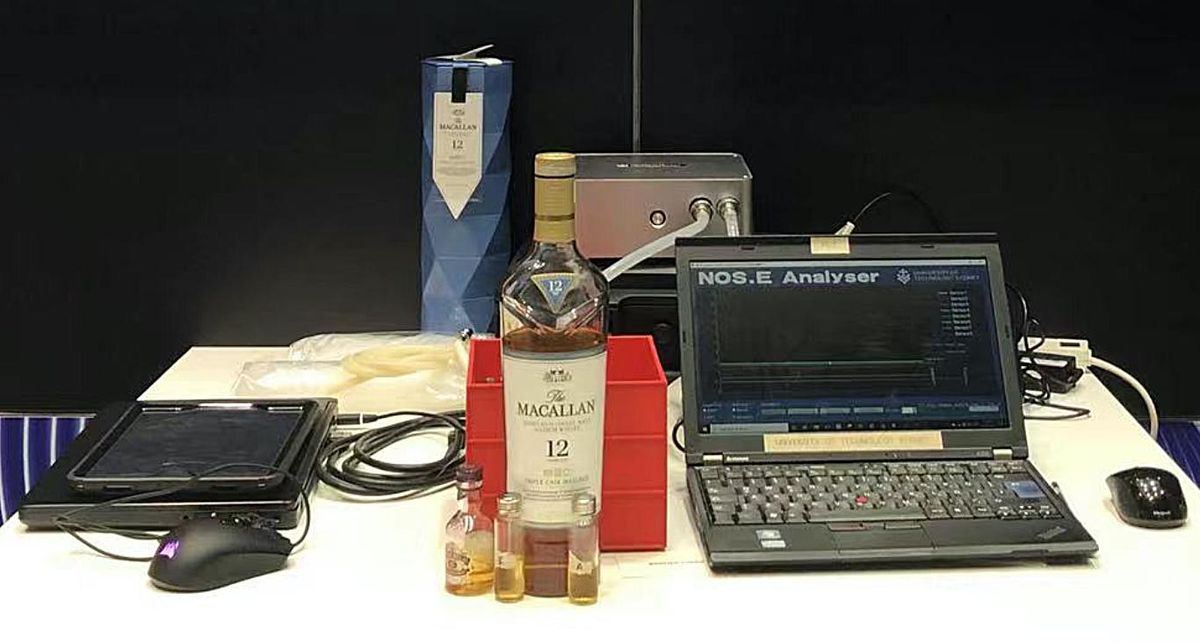A whiskey connoisseur can take a whiff of a dram and know exactly the brand, region, and style of whiskey in hand. But how do our human noses compare to electronic noses in distinguishing the qualities of a whiskey?
A study published 1 February inIEEE Sensors Journal describes a new e-nose that is surprisingly accurate at analyzing whiskies—and can identify the brand of whiskey with more than 95 percent accuracy after just one “whiff.”
E-noses have been gaining in popularity over recent years thanks to their range of valuable applications, from sensing when crops are ready for harvest to identifying food products on the cusp of expiring. It is perhaps unsurprising that many e-noses have also been developed to analyze alcoholic beverages, including whiskey, which had an estimated international market worth US $58 billion in 2018 alone.
“This lucrative industry has the potential to be a target of fraudulent activities such as mislabeling and adulteration,” explains Steven Su, an associate professor at the Faculty of Engineering and IT, University of Technology Sydney. “Trained experts and experienced aficionados can easily tell the difference between whiskies from their scents. But it is quite difficult for most consumers, especially amateurs.”
Therefore, Su and his colleagues sought to adapt one of their e-noses so that it could analyze some key qualities of whiskey. Their original e-nose was designed to detect illegal animal parts sold on the black market, such as rhino horns, and they have since also adapted their e-nose for breath analysis and assessing food quality.
Their newest, whiskey-sniffing e-nose, called Nos.e, contains a little vial where the whiskey sample is added. The scent of the whiskey is injected into a gas sensor chamber, which detects the various odors and sends the data to a computer for analysis. The most important scent features are then extracted and analyzed by machine learning algorithms designed to recognize the brand, region, and style of whiskey.
In their study, the researchers put Nos.e to the test by using it to analyze a panel of half a dozen different whiskies, ranging from Johnnie Walker Red and Black label brands to Macallan’s 12-year-old single malt Scotch whisky. For comparison, they also analyzed the whiskey samples using a state-of-the-art two dimensional gas chromatography time of flight mass spectrometry (GC×GC-ToFMS). Whereas an e-nose simply assesses the overall aroma profile of a substance, the GC×GC-ToFMS enables the identification of individual compounds in the complex scent mixtures. Although GC×GC-ToFMS is highly accurate, this instrument approach is also more expensive and complex to use than an e-nose.
Su’s team was taken aback by the results, which showed that Nos.e was on par with the GC device in terms of identifying whiskey brands.
“Considering the average accuracy is above 95 percent, the e-nose [could potentially] be trained to assess the quality of other popular liquors that can also be counterfeited, such as Australian red wine, Japanese whisky, or Chinese white wine,” notes Su.
Some liquor companies have the same idea in mind. Su says one liquor company based in China has already approached his team and proposed applying the technology to its spirits, although that proposition has been put on hold temporarily due to the pandemic.
Su also notes that his team’s new e-nose may not compare to several other analytical techniques, such as computer vision analysis. “This limitation [with e-noses] is caused by the characteristics of current gas sensors, which are sensitive to environmental changes such as humidity and temperature,” he explains. “Accordingly, we aim to use algorithms to tackle these challenges in the future.”
- Electronic Noses Sniff Success - IEEE Spectrum ›
- Meet the E-Nose That Actually Sniffs - IEEE Spectrum ›
- With This Bionic Nose, COVID Survivors May Smell the Roses Again - IEEE Spectrum ›
- With This Bionic Nose, COVID Survivors May Smell the Roses Again - IEEE Spectrum ›
- Why Power a Whisky Still with Green Hydrogen? - IEEE Spectrum ›
- E-Nose Sniffs Out Coffee Varieties Nearly Perfectly - IEEE Spectrum ›
Michelle Hampson is a freelance writer based in Halifax. She frequently contributes to Spectrum's Journal Watch coverage, which highlights newsworthy studies published in IEEE journals.



